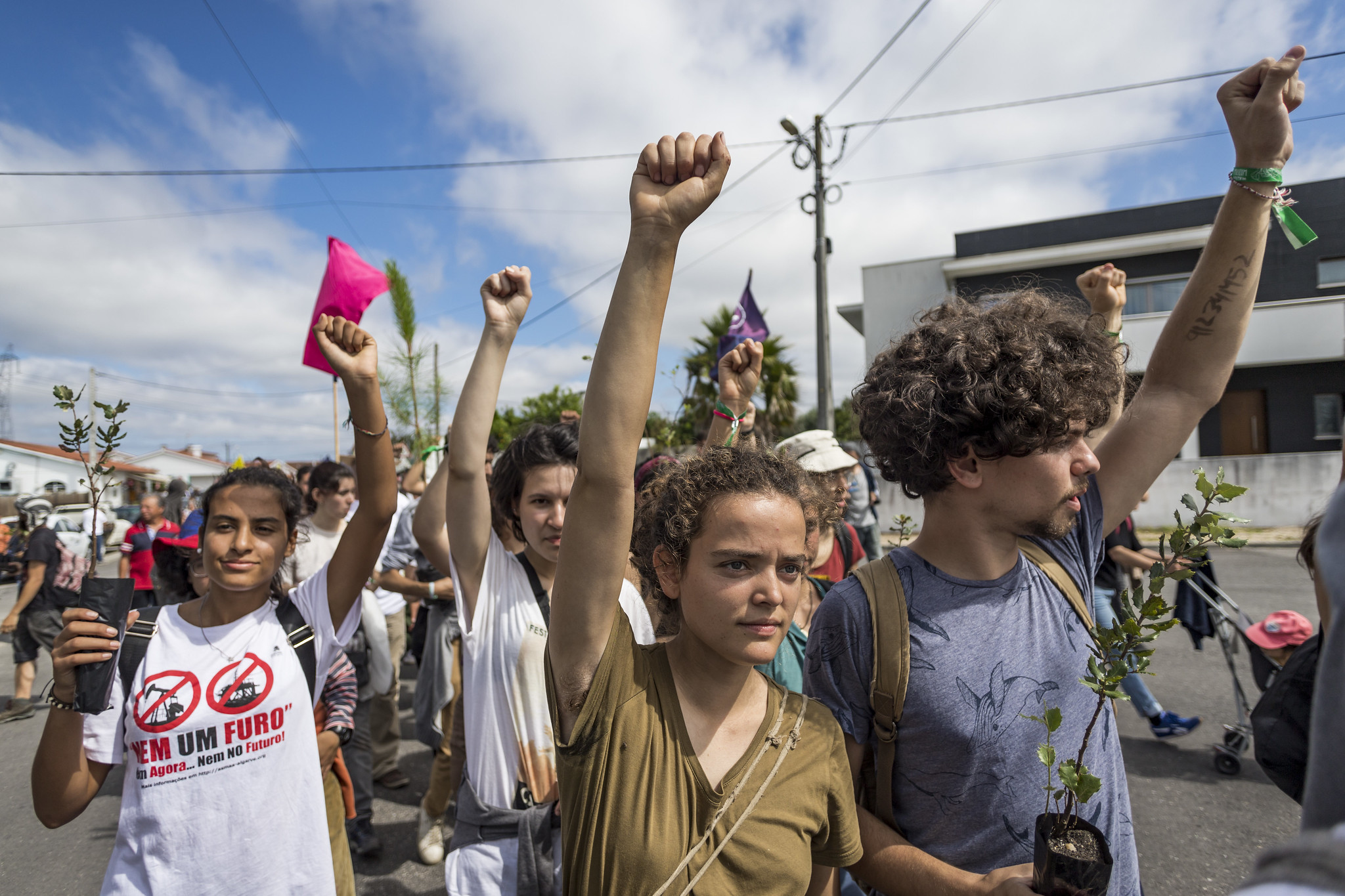A new study conducted by Cátia Branquinho and colleagues, published in the Journal of Community Psychology, elicited the experiences of a large sample of Portuguese adolescents regarding the impact of the COVID-19 pandemic on their lives.
Beyond check-box response options, participants were asked to engage with a set of open-ended questions, “centered on the impact of the outbreak on [young people]’s social life and friendships; their routines and daily life, including school, work, and leisure time; well‐being and health; coping strategies and lessons to deal with future pandemics.”
In response, the young people interviewed discussed several themes: too much time surrounded by family; too little time in the company of peers and an extended social network; isolation and appreciation for preexisting relationships; and new and unanticipated approaches to learning in the absence of sufficient modifications to the virtual learning format.
The study highlighted negatives, positives, and neutral characteristics of pandemic precautions. In addition to examining overarching themes, Branquinho and the team explored patterns in participant contributions unique to gender, age, and socioeconomic status. They write:
“To the best of our knowledge, this is the first study to give a voice to young adults. In this sense, not only did we search for the COVID‐19 pandemic and consequently confinement impact on their lives, but the study also focused on understanding their coping strategies and illustrated lessons for the future.”

More than half of the world’s population is under the age of thirty. In September, Wellcome, UNICEF, WHO, the World Economic Forum, and the Office of the UN Secretary-General released a report, Expanding our vision for mental health: Listening to young people and learning from Covid-19, emphasizing a commitment to including young people in the conversations and decisions impacting them.
Though broad in scope, the report references two projects informing its development – the Collective Resilience Project, which explores sources of coping, meaning, and connection among young people during this pandemic, and the COVID Living project, which has elicited young people’s perspectives through activities and virtual platforms regarding COVID-19 and “mental health.”
Branquinho and colleagues write that “young people can contribute with important knowledge related to their problems and needs, based on their voice and experience,” and “participation can be an important resource during and after COVID‐19.”
Many researchers have sought to include young people in empowerment and change efforts, health equity initiatives, and other participatory youth-adult partnerships. Despite diverse frameworks for including young people, stemming from diverse fields (e.g., community psychology, education, and social work), it’s clear that the importance of youth inclusion is getting attention in spaces where it has not historically.
Although the online survey conducted in Branquinho and the team’s study was not done in the context of a community-based initiative, it provided the opportunity for young people to share the texture of their experiences amidst COVID-19 precautions. The respondents (N=617) were predominately female (69.5%) and were, on average, 19 years of age (ranging from 16 to 24). Data collection occurred between April and May 2020, at the height of Portugal’s first wave of COVID-19 cases. Cases have ebbed and flowed in Portugal but began to rise again in September steadily.
The study results were analyzed in aggregate and in relation to a subset of demographic categories of interest. Specifically, the team examined word-clouds, illustrating commonalities in words and ideas contributed by participants to establish key thematic areas; “(C1) impact on social life and friendly relationships; (C2) impact on daily life and routines; (C3) impact on health and well‐being; (C4) differences in the impact on sex, age, and SES; (C5) coping strategies; (C6) lessons for future pandemics and integrated into subcategories related to their impact on AYA: “positive,” “negative,” or ‘neutral.’” Themes were also mapped onto Engel’s Biopsychosocial model in the authors’ presentation of results.
Many participants shared abrupt changes to major events, cancellations, loss of contacts, increases in distrust of others, and the experience of a loss of interpersonal skills through reduced interactions with others. However, some also mentioned that disease containment measures heightened the value of certain relationships with loved ones.
A large number of participants described their days of confinement as tedious, citing a lack of stimulation and the absence of a structured routine. Generally, online learning was well-received in its introduction based on new opportunities to weave preferred activities into the day. However, many respondents indicated that they felt courses had shifted online without sufficient adaptations to workload. Increased teacher training and preparedness in the future to transition more smoothly and initiatives to combat the sedentary nature of precautions with physical activity and/or reduced screen time were noted as potential areas for improvement based on these concerns.
“Lessons for future pandemics, include how it is important to value freedom because you never know when you can be deprived of it; the importance of following the guidelines of the Directorate‐General for Health; that the National Health System must be prepared and equipped for outbreaks; teachers and students must be trained for online teaching; and that maintaining a routine is fundamental. Television can be seen as a resource in establishing healthy routines (e.g., physical activity schedules, programs with healthy eating recipes before usual mealtimes, evening programs aimed at the whole family).”
In terms of physiological implications, headaches and episodes of muscle pain were noted among respondents. Increased time for relaxation and reduced tiredness were noted as positives, while anxiety, loneliness, depression, irritability, and increased attachment to screens contributed to decreased psychological wellbeing.
Regular communication with loved ones, space for leisure activities, calm, and a regular schedule were commonly cited coping strategies. The results varied little according to gender and age, but female respondents were more likely to share about anxiety, and male participants were more likely to mention privilege as a protective factor against some of the negative implications of precautions.
“Secondary school students highlight the impacts on friendship relationships (distance from friends that translate into homesickness, changes in habits, and ways of socializing with friends), constant contact with parents, the importance of communicating regularly with family and friends, and fear that their family will be infected… university students report permanent family time, alongside the repercussions on physical and psychological health, as well as on education. Also, university students highlight the issue of greater facilitation of the higher SES in dealing with the virus, as found in young men.”
Although geographically and culturally specific aspects of the experience of COVID-19 containment measures must be considered when conceptualizing shifts in everyday life during the pandemic, Branquinho and colleagues’ work spotlights young people’s perspectives in Portugal that may be shared in many other parts of the world.
This study paints a picture of youth grappling with unsettling changes, using diverse strategies and drawing creatively from their extended networks, and meeting these shifts’ demands.
“[Adolescent and young adult] voices describe both positives and negative outcomes, both from a personal, a social, and an environmental perspective. Realizing the ability of AYA to identify their problems and needs, the importance of their voice, and their participation in the issues that directly affect them are highlighted.”
****
Branquinho, C., Kelly, C., Arevalo, L. C., Santos, A., & Matos, M. G. D. (2020). “Hey, we also have something to say”: A qualitative study of Portuguese adolescents’ and young people’s experiences under COVID‐19. Journal of Community Psychology. https://doi.org/10.1002/jcop.22453 (Link)















And nearer the truth is:
https://www.youtube.com/watch?v=kr04gHbP5MQ&feature=emb_logo
https://brandnewtube.com/watch/dr-sucharit-bhakdi-discusses-explosive-new-book-quot-coronavirus-false-alarm-quot-with-richie_hNhbp74ng4l6VXq.html
Report comment
Psychology has no business getting teens to mark checkboxes. Did they explain why the study was done? Did they explain that if teens were affected and sad about the reduction of socializing, that nothing could be done about it? Or did they put this in the journal to promote “therapy”?
And if “talking” about the environment with a “thrapist” does not help (since only change in environment will eventually help) then is it a biobio illness that should then be “treated” with drugs? OH AND “talk therapy”
Everyone in the biz of helping.
It is absolutely disgusting how these snakes disguised as men slither among the unsuspecting. Yes adults are getting more informed, so now they have to turn to the underaged.
It reminds me of another kind of predator. There is physical rape and mental rape and both can be disguised as being loving with good intention.
Get lost and start minding your own business and leave the kids alone.
Articles such as this are disgusting and I hope a few parents or adults inform parents of kids and teens NOT to get caught up in this sales pitch and IF indeed your kids are unhappy about the way things are, tell the kids it’s quite normal.
Report comment
“lessons for future pandemics” obviously suggest the horrific concept of “planned-demincs.” This is nothing, but yes, snake oil for the masses. Vipers hiding in wait for the young people of our nation and the world. I feel sorry for these young people. They do not deserve the evils of these mass snake oil salesmen and women. Wake up America and the World. You are not only being used, but abused, and dare I say “raped” of your natural humanity. And, where did they get this snake oil learning; only from psychiatry and psychology. And where can this be traced to: Marx, Lenin, Mao and his buddies, Pavlov, Freud, B.F. Skinner, etc. etc. etc. Thank you.
Report comment